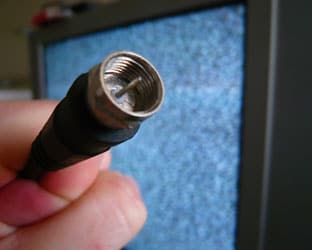 A new PricewaterhouseCoopers report on mobile Internet and cable loyalty examines customer loyalty trends in the entertainment, media and communications industry with a focus on the multi-channel video and wireless business segments. While performance and customer support are paramount for cable, telephony and wireless companies, the wallet trumps all, says the latest PwC Consumer Intelligence Series report titled, “Customer Loyalty.”
A new PricewaterhouseCoopers report on mobile Internet and cable loyalty examines customer loyalty trends in the entertainment, media and communications industry with a focus on the multi-channel video and wireless business segments. While performance and customer support are paramount for cable, telephony and wireless companies, the wallet trumps all, says the latest PwC Consumer Intelligence Series report titled, “Customer Loyalty.”
While building brand loyalty among subscription-based communication providers most often comes down to the delivery of consistent, strong performance at a good price, customer service, honesty, and trust also rank high in influencing customer allegiance. Media and communications companies will need to consider the combination of these attributes to attract and retain customers. Brand switching is most frequently prompted by the promise of cost savings, especially among young consumers who tend to be more cost conscious and less complacent in long-term brand relationships than their older counterparts.
A survey of more than 1,000 U.S. participants and follow-up focus groups found that a brand that “offers the latest technology” was important to 73% of consumers, but did not rank among the highest priorities as only 7% ranked it as one of their top three attributes.
According to PwC, customer loyalty is not so much about the number of communication channels that reach consumers, but the content of the message. And social influence is less important than the customer’s personal experience. Essentially, the ongoing success of subscription-based communication providers, such as cable and mobile companies, depends on:
— Trustworthiness of brand name and reputation
— Consistent, reliable performance
— Attractive pricing policies and promotional offers
— Enhanced marketing and customer service support for older demographics
— Focused customer communications surrounding performance, pricing, customer service and delivery
— Establishing a direct and personal relationship with the customers
For cable providers, which are increasingly competing on cost and content variety, a greater emphasis is needed on delivering attractive pricing packages and bundled services to retain customers and compete with burgeoning online entertainment options. For mobile providers, flexibility in contracts and the growing interest in purchasing certified, pre-owned phones can translate into new revenue-generating opportunities.
Among the key findings on consumers’ evolving sentiment towards loyalty among subscription-based communication providers:
— Compared to other service providers, Internet (25%) and cable (22%) have had the greatest percentage of switchers. Primarily because it is comparatively easier to switch cable and Internet relative to mobile carriers.
— Half of consumers 18-49 said they are likely to use the Internet to satisfy their entertainment needs. Many feel that the Web offers new and expanded content opportunities and options such as over-the-top services that can exceed those provided by cable and often for a lesser price.
— Consumers want the freedom to come and go as they please – and they are willing to pay for it. A majority (64%) of consumers are willing to pay between $26 and $150 or more incremental to the cost of their phone so that they are not bound by an early termination fee.
— The need for speed is the key critical factor of influence in selecting a cable provider – but channel variety and service bundles are also valued. Internet speed and reliability is paramount (90%). Variety of channel line-up is also an important influence (79%).
— Freedom of restrictive contract terms or lower upfront fees does not always provide an incentive to change the “purchase model” to rent/lease smartphones. Most (56%) of consumers are not willing to rent or lease their mobile phones even if it means there would be less restrictive contract terms and a lower upfront fee.





